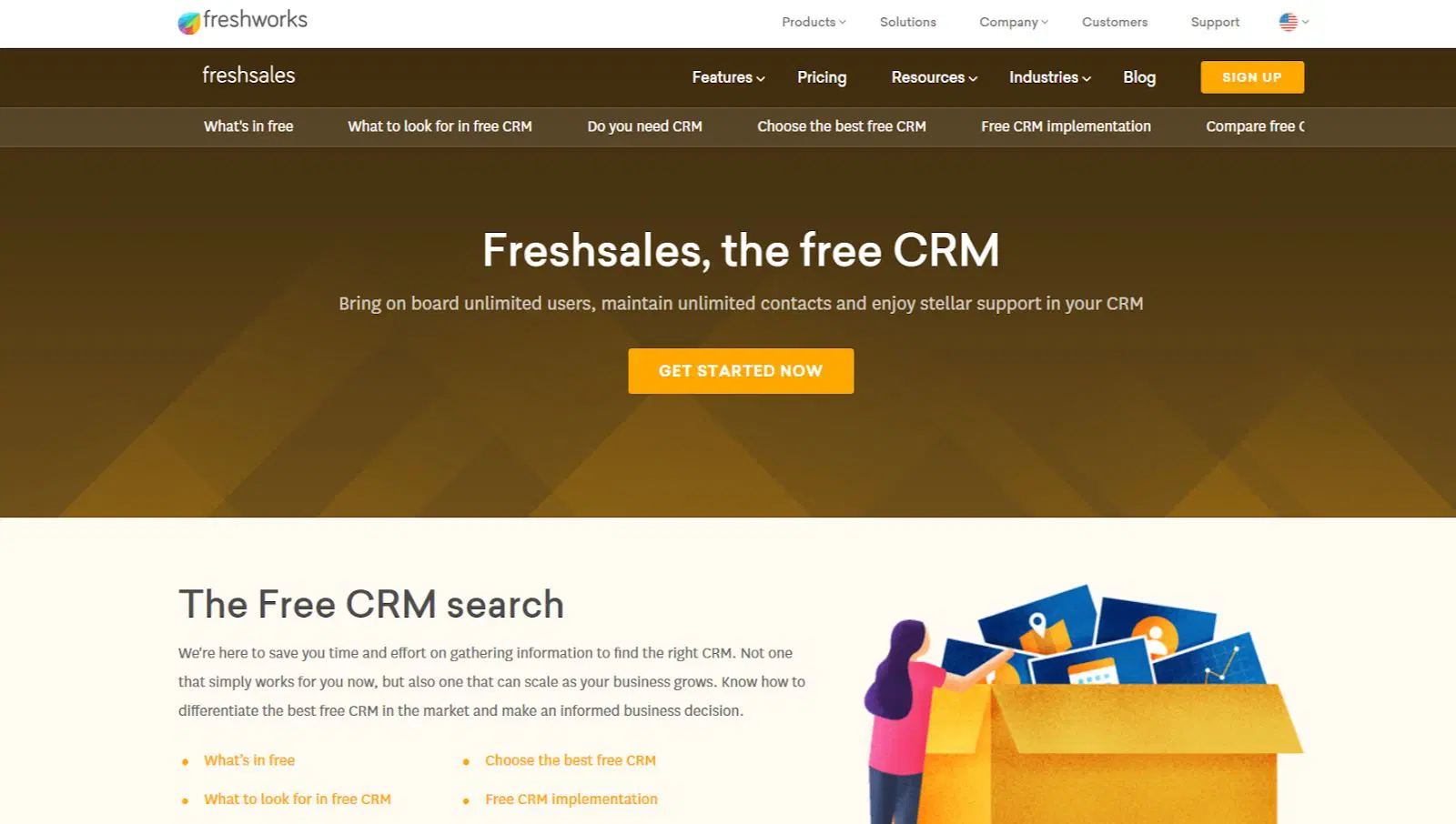“Sales is the lifeblood of your business.”
I hate to use a cliche, but sometimes it’s needed to make a point.
The truth is, you know that sales keeps your business alive.
We all get that.
It’s been beaten death.
But what you probably didn’t consider is what keeps the blood pumping? What keeps those salesy white blood cells flowing throughout your business’s body?
The heart, of course.
So what acts as the heart in your organization?
Sales management.
They’re the ones overseeing everything sales accomplishes in your business. They make sure sales is doing their job as effectively as possible. They give sales everything they need to excel.
It’s a big responsibility.
And it’s a complicated job.
We’ll break down the different parts of sales management and show you how to make them work together in your organization.
What Is Sales Management?
The sales management definition we like to use is this:
Sales management is the coaching, leading, and directing of sales reps to consistently gain new leads, nurture qualified prospects, and close more deals.
It’s the job of sales management to hire excellent salespeople. Train them to become excellent. Implement processes that make this possible. Coordinate sales operations to hit targets. Analyze progress. And provide tools, resources, and software for higher performance.
Once you’ve staffed your business with solid salespeople, it’s time to implement the sales management process.
What Is the Sales Management Process?
The sales management process is a combination of methods and procedures you use to shorten the sales cycle and increase the size and number of deals closed.
This is going to vary from business to business and sales manager to sales manager.
There is no specific, consistent sales management process.
What works for you may not work for someone else in the same industry, let alone a wholly different niche with different products or services and a different target market.
However, there are similar principles for every sales management process.
For example, most sales managers will oversee and attempt to optimize at least the following:
- The territory salespeople are working in.
- The opportunities salespeople are generating.
- The interactions salespeople have with leads and prospects.
- The accounts salespeople are currently managing.
One thing to note is that the sales management process can be a double-edged sword.
It can empower, uplift, and accelerate your salespeople to greater heights of efficiency and effectiveness…
While it can also hinder, slow down, and even wreck your salespeople’s performance if the process is too rigid. This happens most often in organizations that prioritize “following the rules” over improving results.
There are always ways to improve the sales management process.
But if you notice your sales process isn’t working as well as you’d like, it shouldn’t be abandoned either. Your salespeople are resourceful, but again, sales management is the heart in charge of directing them toward success.
We suggest designing your sales process to be firm but flexible.
Sales analytics, which we’ll touch on later in this post, will help immensely with redesigning and improving your sales process.
But before you start looking for ways to improve the sales process, you need to understand how well you’re equipping your sales team for success.
And that comes down to sales operations.
What Is Sales Operations?
Sales operations is the ground floor of sales management.
Sales operations pulls together the tools, resources, data, and support necessary to drive front line sales teams to consistently reach their goals better, faster, and more efficiently.
Some of you may think this sounds like sales enablement.
And you’re partially right.
Sales enablement is like the execution wing of sales operations. It sets things in motion. It’s the actual tools and resources your sales team are using.
But sales operations is the planning and strategy behind something like sales enablement.
Sales operations makes decisions for how to proceed.
It uses data to develop sound strategies.
It follows best practices to lead sales training.
It leverages technology to level-up sales tactics.
Where sales enablement gives salespeople tools to use to sell better, sales operations designs whole systems to allow salespeople to focus as much time on selling over anything else.
Which means sales operations are responsible for much more than just the latest sales software – they’re responsible for setting and hitting achievable targets, for training agents in your current processes, and for deep data analysis to drive decision-making.
You can break sales operations into the following 4 categories:
- Strategy – including analyses of performance metrics, creation of incentive programs, and the selection of enablement tools and training requirements.
- Operations – including recruitment and onboarding, maintenance of collaboration and communication channels, and management of contracts.
- Processes – including the adoption of appropriate sales metrics and KPIs, coaching and mentoring, and the implementation and optimization of workflows, sales activities, etc.
- Technology – including the integration of software tools, content management, and CRM platforms.
While sales managers are typically on the front line with salespeople, sales operations handle all of the backend requirements that fuel the strategies and decisions other managers execute.
What Is Sales Strategy?
Instead of defining it ourselves, we’ll give you Hubspot’s definition of a sales strategy:
“A sales strategy is an approach to selling that allows an organization’s sales force to position the company and its product(s) to target customers in a meaningful, differentiated way. Most strategies involve a detailed plan of best practices and processes set out by management.”
This is where sales managers are needed more than ever.
It’s their job to define and map out a clear, consistent, proven strategy every single salesperson can follow to nurture prospects and close deals.
This is the nitty-gritty of selling.
The sales strategy brings together processes, methods, techniques, tactics, and tools to give your sales team a model for selling.
More importantly, the sales strategy acts as a guide during the sales cycle as reps carry prospects through their pipeline.
Your sales strategy will differ from someone else’s.
It may also change as your business grows, technology evolves, or you release new products.
But a variety of strategies will remain constant, such as:
- Cold calling and cold emailing.
- Pitching your products and services.
- Presenting and demonstrating your products and services.
- Closing a prospect.
- Managing a client or customer throughout the account’s lifecycle.
Of course, what we just gave is more of the “what to do” not the “how to do it.”
Again, that’ll be dependent on your product, market, and industry.
But some concrete strategies we recommend sales managers teach their reps are:
- Obsessively understand your target customers wants, needs, pains, gains, fears, and desires so you can confidently and effortlessly sell them your solution.
- Score your leads in order to focus on the most important ones and ignore those that will waste your time or take a while to close.
- Incorporate storytelling into your pitch, presentations, and meetings with prospects for maximum persuasion and engagement.
- Request and analyze feedback from leads who haven’t bought yet and customers who are both satisfied and dissatisfied with your solution and customer service.
- And always sell yourself, not just your products and services to a prospect. When the decision-maker knows, likes, and trusts you, it may be enough to push over the edge and buy your solution over your competition.
What Is Sales Analytics?
According to Techopedia:
“Sales analytics is the process used to identify, model, understand and predict sales trends and sales results while helping in the understanding of these trends and finding improvement points. It is used to determine the success of a previous sales drive and forecast as well as determine how future ones will fare.”
Sales analytics are used all the time by sales managers and sales operations, especially. And it should form the backbone of decision-making.
Without collecting data on your processes, performance, and productivity you won’t know about problems holding you back or opportunities for improvement.
There are at least 12 metrics we recommend measuring in your sales dashboard:
- Sales growth
- Sales target
- Opportunities
- Sales to date
- Product performance
- Lead conversion rate
- Sell-through rate
- Cannibalization rate
- Quote-to-close
- Sales per rep
- Average purchase value
- Sales by region
What Is Sales Performance Management?
Sales performance management (SPM) is the process of monitoring, guiding, and training salespeople to better their skills, processes, and results.
More often than not, managers use SPM software to assist them in analyzing KPIs, metrics, performance levels, and drawing conclusions from them. This helps glean insights into the activity of their sales reps in order to determine what’s working, what’s not, and how to improve.
On top of that, you need to prepare for the aftermath of adjustments made.
If you see an opportunity to 2x your sales reps’ performance, you’ll need to run a cost/benefit analysis so the impact of any changes you make don’t negatively affect your team, your organization, or the goals you’re aiming to achieve.
So there are 3 distinct things every sales performance manager needs:
- Visibility into behavior and performance, both for managers and sales reps, to see and judge progress in real-time.
- Accurate sales forecasts to get ahead of potential future revenue or profit problems and correct course if there are any.
- Sales team motivation and incentive programs to fight distraction, discouragement, and poor performance.
What Is Sales Pipeline Management?
Sales pipeline management is the tracking and managing of all sales opportunities across the entire sales cycle and buyer’s journey.
Your job as a manager is to help salespeople turn leads into prospects, nurture those prospects until they’re ready to buy, and then close the sale.
It’s also about helping your salespeople hit their quotas and do all the other things they need to for success.
Below is a brief list of some ways to manage a pipeline:
Follow Up with Existing Leads
In 2007, it took 3.68 calls to reach a prospect, but today it takes closer to 8 or more.
This is due, in large part, to consumers having more options.
But it’s also due to having access to many more communication options such as chatbots and social media.
In order to keep them interested, you have to consistently pursue them. That means following up regularly, on a weekly or monthly basis.
Prioritize and Pursue the Best Leads
Your salespeople have a finite amount of time.
They should spend it pursuing leads and prospects who are the most qualified, show the most interest, and will bring in the most revenue.
One way to do this is by avoiding any distractions that don’t move the needle in your business.
Another way is to review your sales activities for each lead. From there, you can identify which leads are the most engaged.
Aggressively Remove Dead Leads
Dropping dead leads is just as important as pursuing hot leads.
If a lead explicitly says they’re not interested, or they can’t be contacted, or you’ve spoken with and met with them multiple times and can’t move them through your pipeline, you can count them as a dead lead.
The faster you identify dead leads, the cleaner your pipeline remains, and the more time you can spend pursuing leads who are much more likely to become customers.
What is the Best Sales Management Software?
The best sales management software is hard to pin down. There are many to choose from.
But we compiled a few of the top ones for you below.
Freshsales

Freshsales is a completely free CRM that stores all of your leads’ information in one place.
You can create customer profiles that include their social media, websites, products, etc. You can group sales teams by territories. And you can score leads to judge who’s hot and who’s not.
Velocify LeadManager

Velocify LeadManager uses automation to cut down on the menial, time-consuming tasks that plague most salespeople, giving them more time to close deals. Routine tasks, reminders, and identification of who to contact and how is all automated to simplify your workflow.
VanillaSoft

VanillaSoft helps salespeople engage, qualify, and close the sale using all of their tools in one place.
You’re able to automate workflows. It automatically determines the next best lead to contact and pursue. You never lose an opportunity and you’re able to contact more leads faster than before. And you can automate calls, emails, and text messages for maximum outreach.
Another Sales Management Software You Haven’t Considered Yet
While the software we just showed you is excellent for managing pipelines, it’s missing a crucial component for increasing engagement:
Visual communication.
Your salespeople could impress prospects and persuade them more easily if they could record their screen, or shoot webcam videos, or create their own instructional GIFs.
We can help make that happen with Zight (formerly CloudApp).
We’ve been ranked by G2 Crowd as one of the top sales enablement tools.
Our software is easy to use and simple to share.
Give your sales team a unique tool for closing deals by discovering why Zight (formerly CloudApp) is an essential sales management tool today.
Zight (formerly CloudApp) brings HD screen and webcam recording, GIF creation, screenshots and annotations to the cloud in an easy-to-use, enterprise-grade app so you can quickly create and share visual content.
We help customer support teams:
- Easily create support materials and tutorials
- Optimize customer support workflows
- Provide customers with detailed answers and close Zendesk tickets faster
- Improve your team’s CSAT scores
- Track bugs and document problems
- Improve customer support initiatives
Learn more about Zight (formerly CloudApp) for Customer Support here.



Leave a Reply